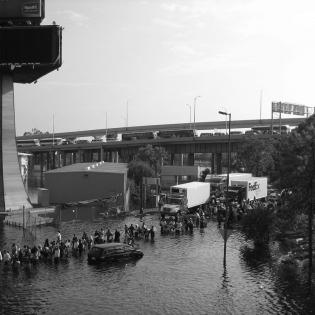Preparedness for Natural Disasters
The learners will identify those natural disasters that could befall their state and/or local area, and discuss the impact that these disasters could have in terms of human, property, and/or capital losses. They will also explore forewarning/alert and preparedness programs, as well as the role of community capital, in helping to reduce the impact of such disasters.
The learner will:
- identify potential for state/local natural disasters.
- identify rationale for preparing for natural disasters.
- identify methods of preparedness for these potential natural disasters.
- define the term community capital.
- investigate the role(s) that community capital plays before, during, and after a natural disaster.
- Display Board
- Journals/Writing Paper
The learners could encourage/challenge their families to identify preparedness programs for their home in the event of a local natural disaster.
- Community Capital www.learningtogive.org/resources/community-capital
- For a listing of contemporary National and International Natural Disasters see https://www.emdat.be/
Instructions
Teacher Note: If at all possible, make arrangements with the school administration to conduct a drill, --- Fire Drill, Tornado Drill, etc--- at the beginning of this class period as a way to introduce the lesson and begin the discussion concerning preparedness)
Anticipatory Set:
As the learners enter the classroom write the following list on the display board: Earthquakes, Extreme Heat, Floods, Hurricanes, Landslides/Mudslides, Power Outages, Tornadoes, Tsunamis, Volcanic Eruptions, Wildfires, Winter Weather, Drought, etc. Lead the learners identify this as a list of (natural disasters) and challenge them to add any that might not be listed. From this list, have the learners identify those natural disasters most likely to impact their community and determine some things that might be done to help reduce and possibly eliminate potential losses that could occur as a result of these disasters ( i.e. forewarning/alert, preparedness programs, etc.). (For a listing of contemporary National and International Natural Disasters see https://www.emdat.be/)
From the list identifying those natural disasters most likely to impact the local area, have the learners discuss the impact that a forewarning/alert of impending disaster might have on the potential losses that might be incurred as a result of each the natural disasters.
From this same list, have the learners discuss the impact that a preparedness program (similar the Fire Drill or Tornado Drill that they just experienced or have experienced in the past) might have on the potential losses that might be incurred as a result of each the natural disasters.
Have the learners identify some of the ways that their community might be forewarned/alerted about an impending natural disaster and some of the things that might be done to be as prepared as possible to limit the losses that could occur as a result of these natural disasters.
Have the learners discuss whose responsibility it might be to forewarn/alert and provide preparedness programs for natural disasters in their community.
Place the term community capital on the display board and challenge the learners to come up with possible definition for the term (Definition- Features of social life-norms, and trust that enable participants to act together more effectively to pursue shared objectives - Robert Putnam. See also: /papers/index.asp?bpid=15 )
Have the learners determine if the citizens in a community have a responsibility to act together to forewarn/alert and provide preparedness programs for impending natural disasters, and if so, have them list some of the ways that community capital could play a role in helping to reduce and possibly eliminate potential losses that might occur as a result of these disasters.
Conclude this lesson by having the learners respond in writing to this prompt, “The most important role the citizens of a community can play in natural disasters, occurs in the aftermath of the disaster.”
The learners’ involvement in the classroom discussions, the depth of their thinking and reflections, as well as the comprehensiveness of their journal responses will form the basis for the evaluation of this lesson.
Philanthropy Framework
-
Strand PHIL.II Philanthropy and Civil Society
-
Standard PCS 04. Philanthropy and Geography
-
Benchmark HS.2 Identify and describe how civil society sector organizations help people nationally and internationally.
-
-
Standard PCS 05. Philanthropy and Government
-
Benchmark HS.13 Define and offer examples of community/social capital.
-
-
-
Strand PHIL.III Philanthropy and the Individual
-
Standard PI 01. Reasons for Individual Philanthropy
-
Benchmark HS.11 Discuss the concept of corporate citizenship and corporate responsibility for the common good.
-
Benchmark HS.4 Cite historical examples of citizen actions that affected the common good.
-
-
